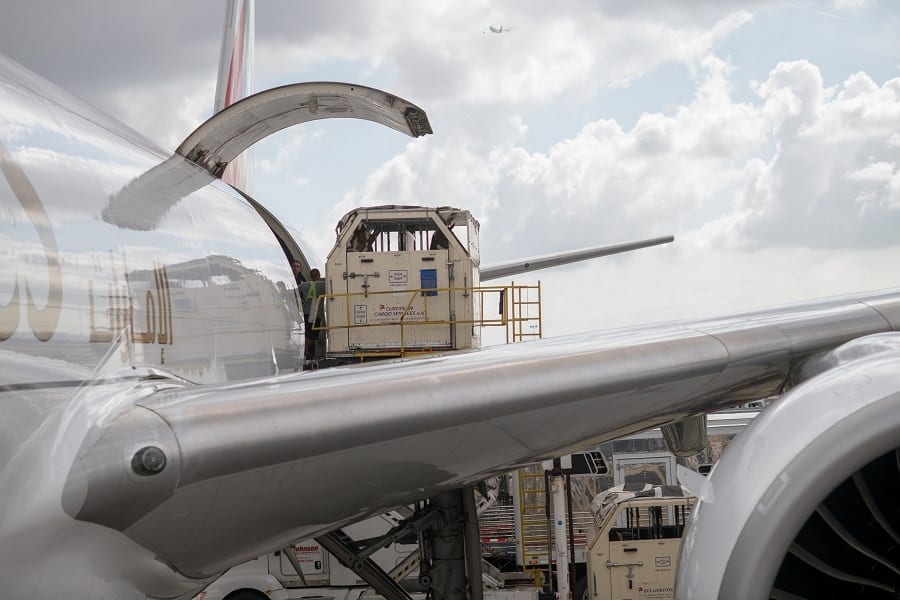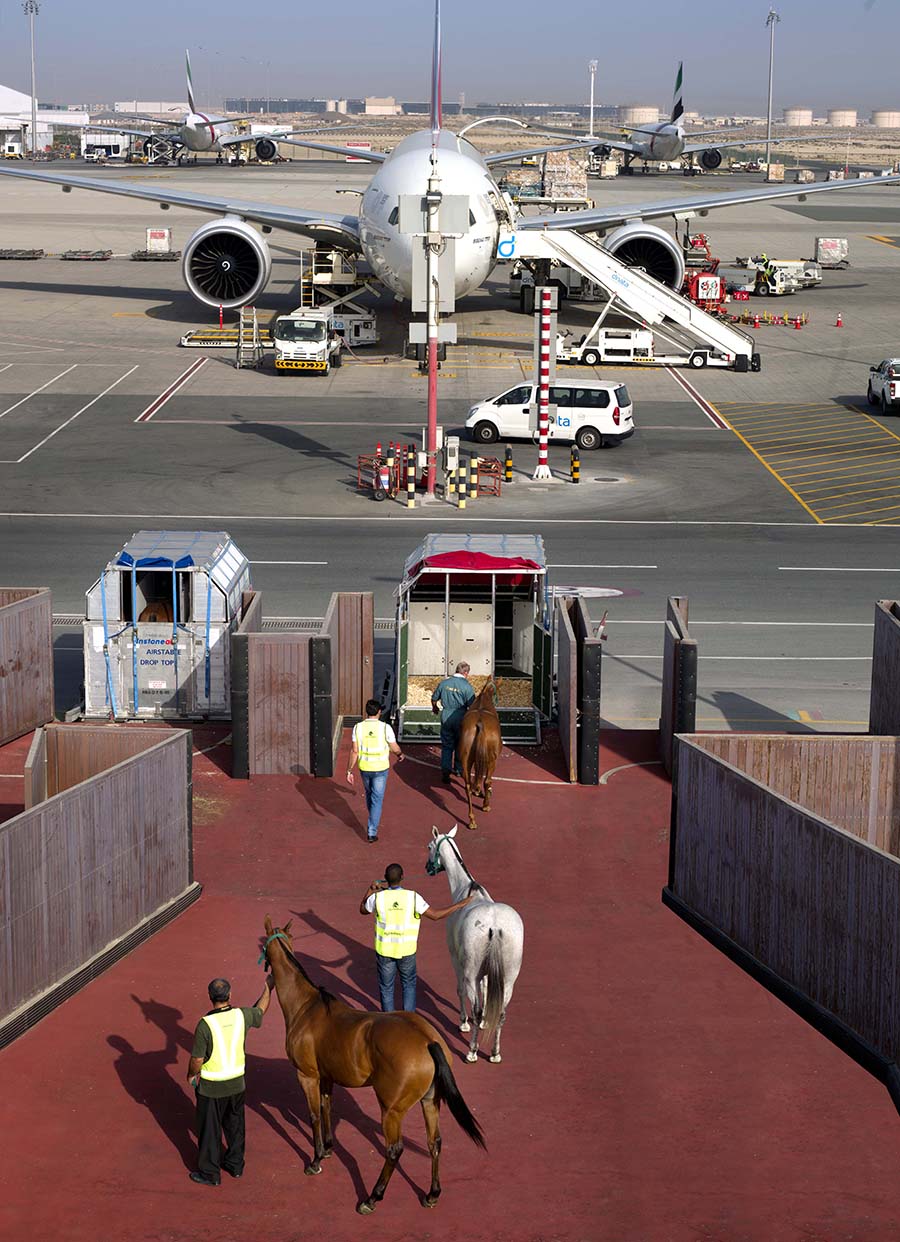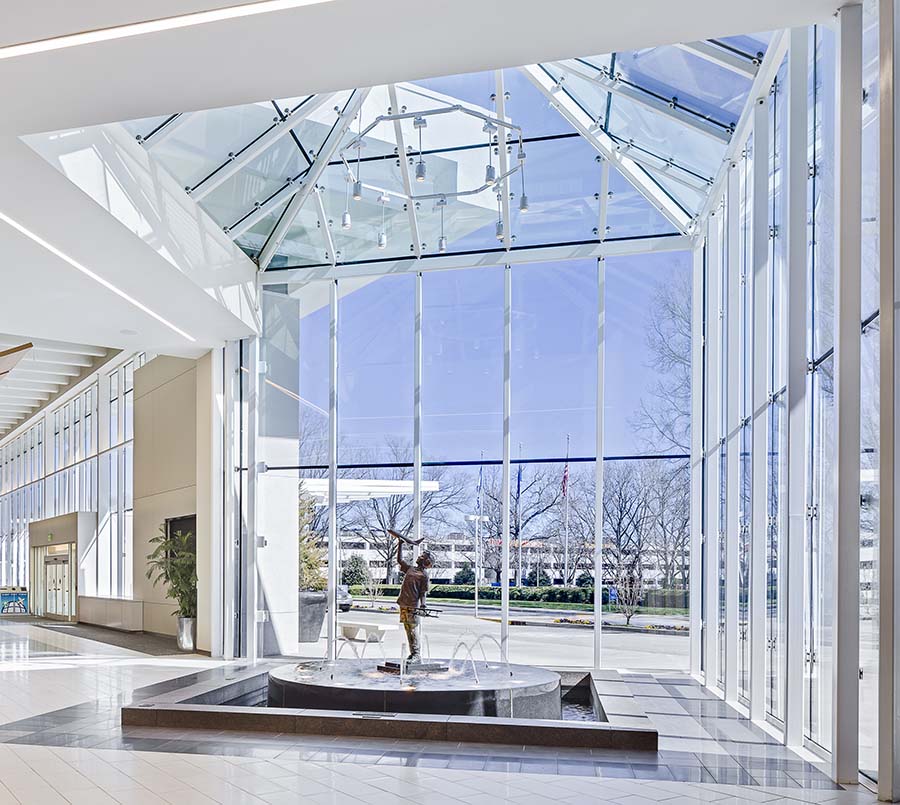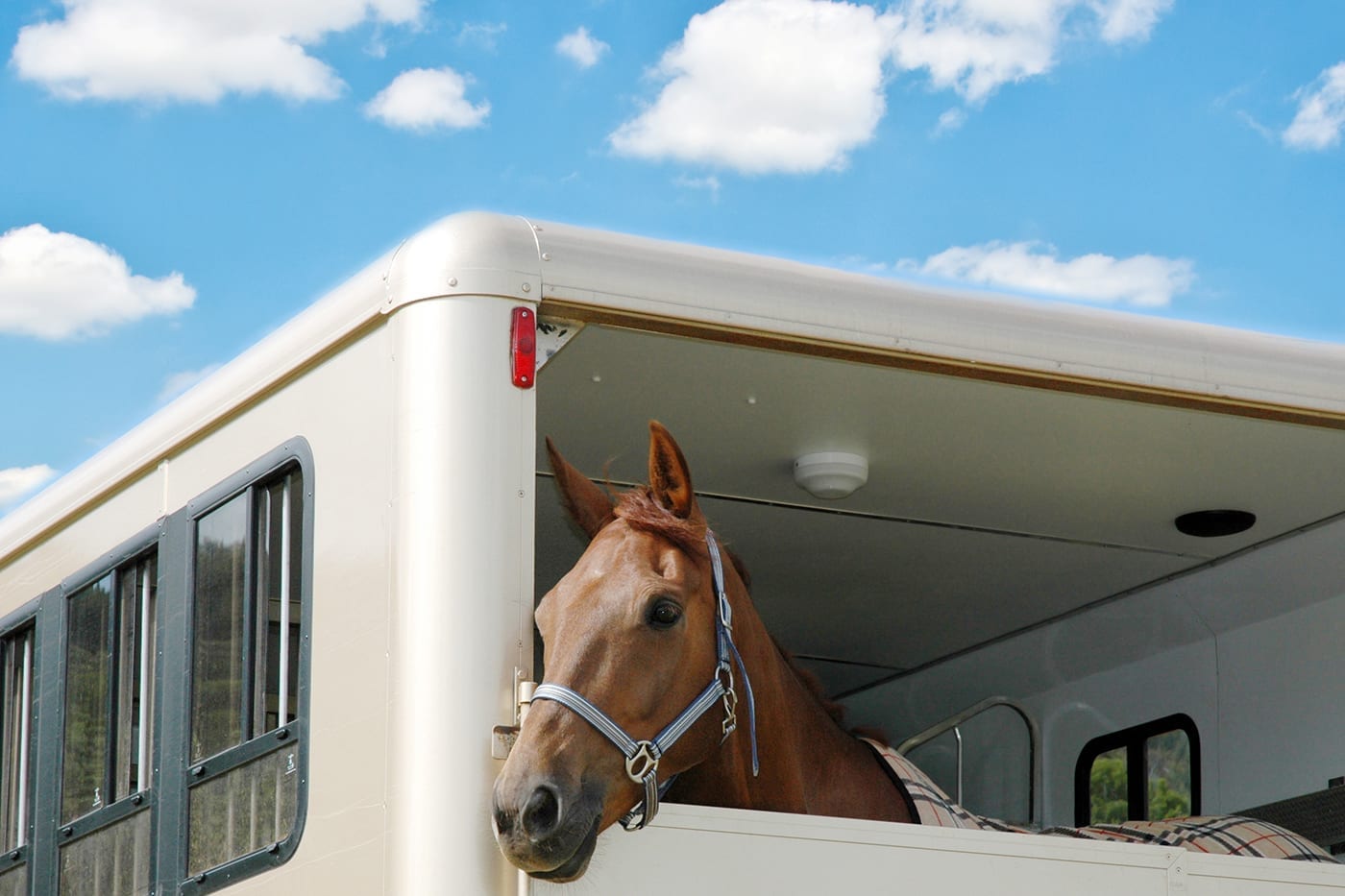Getting horses, competitors & spectators to the World Equestrian Games
By Steve Hedges
Residents of tranquil Tryon, North Carolina are accustomed to horse trailers moving along area roads, even more so since the Tryon International Equestrian Center opened for business in 2015.
That stream of traveling horses will become a stampede in the days leading up to the September 11-23 World Equestrian Games at the equestrian center, known to locals as “TIEC.”
And the preferred mode of transportation won’t be familiar white trailers. The area’s airports, large and small, are poised to play a vital role in moving animals, competitors, spectators, and sponsors in the lead-up to the games.
In fact, the equine migration dovetails with multi-million dollar expansion projects at area airports, where the equestrian game crowd estimates of 500,000 visitors over a two-week period, are taken seriously.
Nearly 1,000 horses are expected to be transported to TIEC for the Games, including 550 arriving by air from Europe. The European horses, many of them frequent fliers, will travel in cargo-pods converted into horse stalls, complete with water and hay and attentive grooms.
The containers will be rolled onto 20 specially hired Air Emirates Cargo Boeing 777s that will fly from Belgium to the Greenville-Spartanburg international Airport (GSP).
From there, the horses will be transferred to trailers for the hour-long interstate drive up to TIEC, just outside of Tryon, NC, where they’ll be quarantined for several days until blood tests confirm they’re disease free. (Even more horses from South America will arrive in Miami and hop trailers for the drive north, while Asian entrants will land in Chicago and be trucked south).

Photos courtesy of Emirates/MSLGROUP
Although not a large airport, GSP has become accustomed to heavy cargo. It expanded the cargo corner of the airport after BMW built an assembly facility next door for its popular “X” model SUVs. Now, it’s adding horses to its manifests and handling capabilities. The Emirates 777 equine carriers won’t have a problem landing on the airport’s 11,000-foot runway. And GSP has ordered 100,000 gallons of Jet-A fuel and is expanding its fuel storage just in time for the games.
The arrival of human competitors, sponsors, and spectators presents its own logistical opportunities. GSP will serve as the primary passenger hub for the Games. It has been a TIEC sponsor since the horse center opened, and it has conveniently just completed a $125 million terminal expansion. Its terminal now features a Wolfgang Puck restaurant for travelers who’ve gone through security, as well as outposts from some local restaurants and bars.
When he first heard of the World Equestrian Games, Terry Connorton, director of nearby Spartanburg, SC Downtown Memorial Airport, envisioned horses being flown into his airport and unloaded on a nearby green, where he’d have to “lunge” them – run them in circles on a long lead line—to calm them down. Connorton grew up handling horses on a farm in southern England.

“Spartanburg’s Downtown airport (SPA) doesn’t offer commercial air service, but it’s already a popular destination for private and business jet passengers and pilots, namely because of the airport’s simplicity, efficient service, low fuel prices and location.”

Much to his disappointment, Connorton soon learned that Spartanburg’s 5,200-foot runway wasn’t long enough to accept large horse-hauling aircraft. Instead, he’s turned his attention to a high-level of customer service for the human passengers who will arrive by private aircraft.
Spartanburg’s Downtown airport (SPA) doesn’t offer commercial air service, but it’s already a popular destination for private and business jet passengers and pilots, namely because of the airport’s simplicity, efficient service, low fuel prices, and location. At SPA, visitors typically step right out of aircraft into their waiting vehicles. There is no security line, just a helpful staff and locked gate. The terminal building was remodeled six years ago and features a pleasant lounge. Downtown Spartanburg hotels and restaurants are just 10 minutes away, and SPA boasts just a 50-minute drive on the interstate to TIEC.
Connorton expects a sizeable increase in private aircraft traffic throughout the Equestrian Games and has lined up extra jet fuel and rental cars. But SPA faces another challenge: The airport is mid-way through a $30 million, 800- foot runway and taxiway expansion project. The airport closed in June for the final construction phase, and the single runway is scheduled to be finished just in time for games, if all goes as planned.
“So far we’re on schedule,” Connorton says confidently, “and we’ll make it in time for the equestrian games.”
Fenix Air Charter, based at SPA, plans to offer quick flights in its twin-engine Beech Baron and single-engine Piper Cherokee Six aircraft from SPA and also from Greenville Downtown Airport (GMU) to Rutherford, NC, County Airport, which is just a 15-mile winding, country-road drive from TIEC. That shuttle service might prove popular for those don’t want to trudge to TIEC on crowded interstates.
As for Rutherfordton (identifier FQD), the airport also expects a rush of private aircraft traffic during the games. Its 5,000-foot runway was resurfaced last year, and taxiway refurbishment finished in July – just in time for the games. FQD’s real advantage is that it’s the closest air field to TIEC, and some backroad navigating from the field will allow arriving spectators to miss all the traffic.
“We’re ready for the NetJets and fractional operators who drop passengers on a quick turn,” said Randy Patterson, Rutherfordton Airport’s manager. “We really don’t have the ramp space to park a lot of aircraft.”
Patterson has already experienced the ebb and flow of aircraft traffic during equestrian center events and knows it can get busy quickly. He’s ordered an additional 3,000-gallon jet fuel truck to handle the expected quick-turn traffic, and like other airport managers, he’s arranged for extra rental cars and shuttles.
“It’s hard to know what to expect,” Patterson said. “You just have to be ready for it.”

